Selina Concise Mathematics Class 9 ICSE Solutions Inequalities
Selina ICSE Solutions for Class 9 Maths Chapter 11 Inequalities
Exercise 111.From the following figure, prove that: AB > CD.
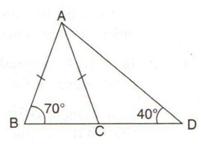
Solution 1:
2.In a triangle PQR; QR = PR and
Solution 2:
3.If two sides of a triangle are 8 cm and 13 cm, then the length of the third side is between a cm and b cm. Find the values of a and b such that a is less than b.
Solution 3:
4.In each of the following figures, write BC, AC and CD in ascending order of their lengths.
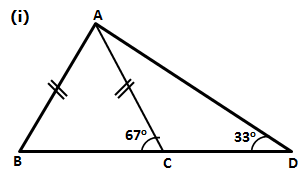
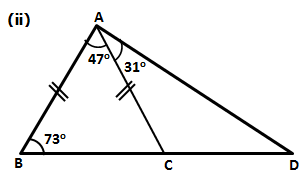
Solution 4:
5.Arrange the sides of ∆BOC in descending order of their lengths. BO and CO are bisectors of angles ABC and ACB respectively.

Solution 5:
6.D is a point in side BC of triangle ABC. If AD > AC, show that AB > AC.
Solution 6:
7.
Solution 7:
8.In the following figure,
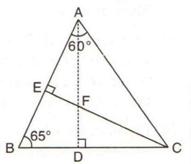
Prove that:
(i) CF > AF
(ii) DC > DF
Solution 8:

9.In the following figure; AC = CD;
Prove that: BC > CD.
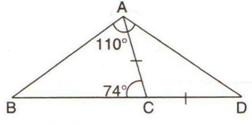
Solution 9:
10.From the following figure; prove that:
(i) AB > BD
(ii) AC > CD
(iii) AB + AC > BC

Solution 10:
11.In a quadrilateral ABCD; prove that:
(i) AB+ BC + CD > DA
(ii) AB + BC + CD + DA > 2AC
(iii) AB + BC + CD + DA > 2BD
Solution 11:
12.In the following figure, ABC is an equilateral triangle and P is any point in AC; prove that:
(i) BP > PA
(ii) BP > PC
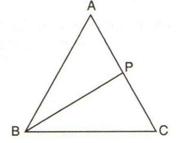
Solution 12:
13.P is any point inside the triangle ABC. Prove that:
Solution 13:
14.Prove that the straight line joining the vertex of an isosceles triangle to any point in the base is smaller than either of the equal sides of the triangle.
Solution 14:
15.In the following diagram; AD = AB and AE bisects angle A. Prove that:
(i) BE = DE
(ii)
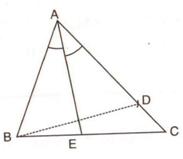
Solution 15:
16.The sides AB and AC of a triangle ABC are produced; and the bisectors of the external angles at B and C meet at P. Prove that if AB > AC, then PC > PB.
Solution 16:
17.In the following figure; AB is the largest side and BC is the smallest side of triangle ABC.
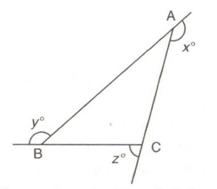
Write the angles xo, yo and zo in ascending order of their values.
Solution 17:
18.In quadrilateral ABCD, side AB is the longest and side DC is the shortest.
Prove that:
(i)  C >
C >  A
A
(ii)  D >
D >  B.
B.
Solution 18:
19.
Solution 19:
20.
Solution 20:
21.
Solution 21:
22.In triangle ABC, side AC is greater than side AB. If the internal bisector of angle A meets the opposite side at point D, prove that:
Solution 22:
23.In isosceles triangle ABC, sides AB and AC are equal. If point D lies in base BC and point E lies on BC produced (BC being produced through vertex C), prove that:
(i) AC > AD
(ii) AE > AC
(iii) AE > AD
Solution 23:
24.Given: ED = EC
Prove: AB + AD > BC.
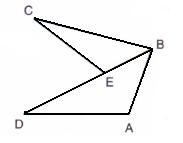
Solution 24:
25.In triangle ABC, AB > AC and D is a point in side BC. Show that: AB > AD.
Solution 25:































